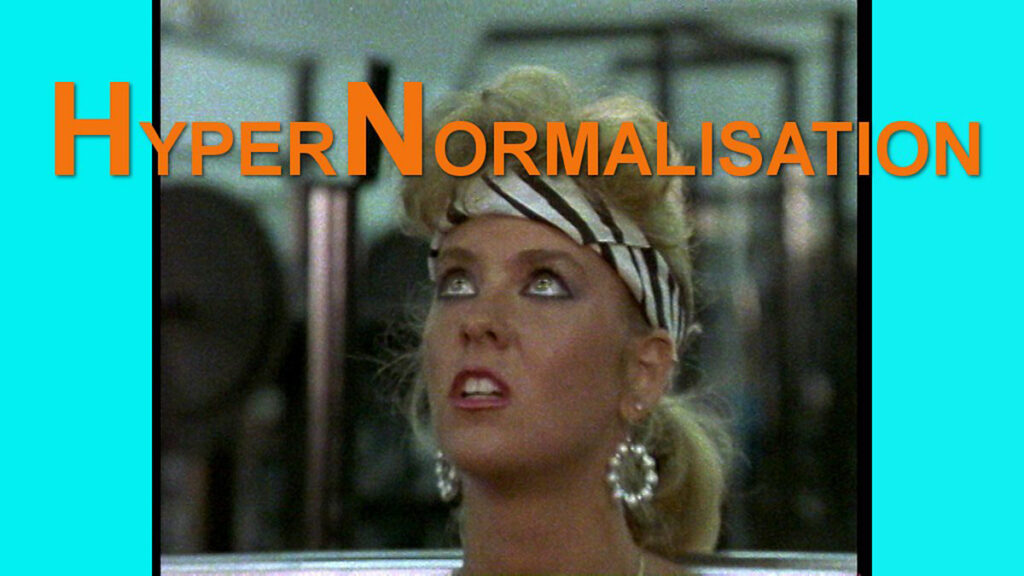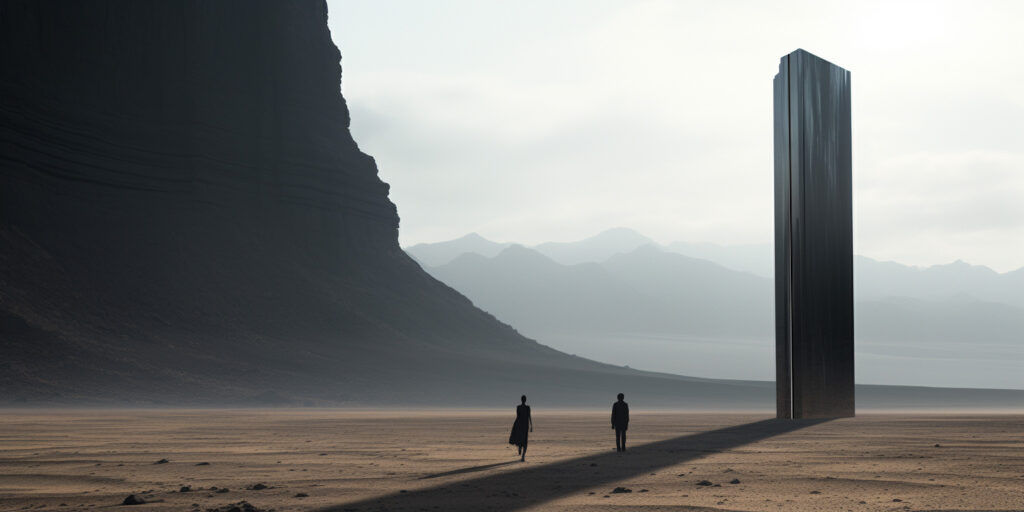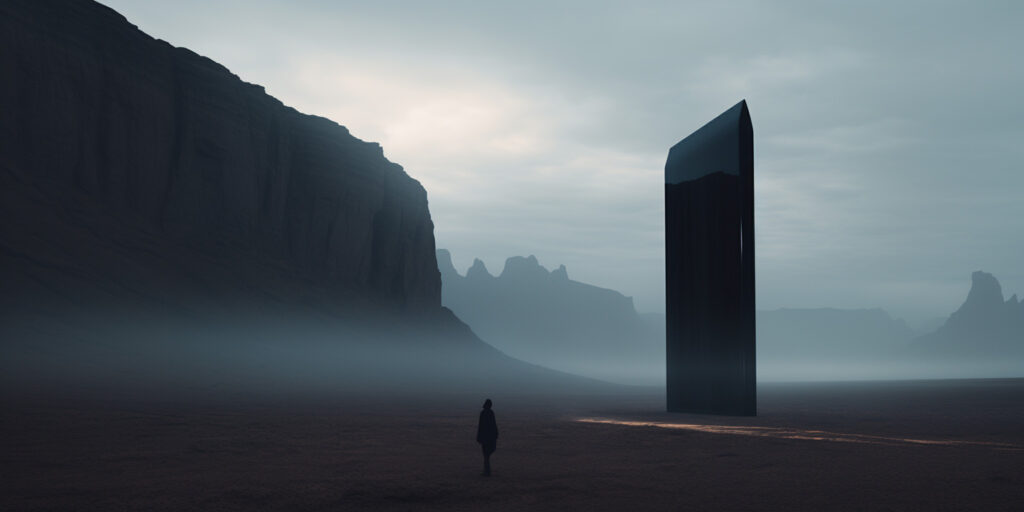The internet has seen an era of social media, which began with user generated content giving rise to social networks, but that’s starting to look like a dated concept.
All over the world, people are growing weary of a relentless treadmill of smartphone shot clickbait and the negative impact it’s having on our mental health.
FFAI looks ahead to the next step.
Social media has always flirted with the line between fiction and reality, with people able to portray a carefully staged image of themselves. This is what makes social media the perfect launch pad for AI Media.
If any of you have watched “Hypernormalisation” by Adam Curtis on the BBC, alarm bells might be chiming at the thought of AI Media.
Because of social media there are now a million versions of personal “truth” and our shared reality has been undermined.
His film argues that governments, financiers, and technological utopians have, since the 1970s, given up on the complex “real world” and built a simpler “fake world” run by corporations and kept stable by politicians.
In the film, Curtis explores the consequences of this Hypernormalisation where the collective “truth” has become atomised in an age of individualism and complexity. The simple collective truth that underpins our Western culture and democracy has shattered like glass. This is partly because we live in a modern world that is so complex, few actually understand one reality any more. The world seems increasingly absurd and chaotic. In turn, people feel powerless to control the events that influence their lives and are unable to act on information that’s relevant to improve their situation. The world has got out of hand, beyond their control, it’s even worse than being on the phone to eBay customer services.
The biggest consequences are ahead of us but the immediate ones have played out in the last 6 years – the rise of popularism, fascism and the undermining of democracy as we have already seen in many major Western countries including the UK, US, Italy and Finland.
/Imagine A Black Monolith stands in a misty desert like the monolith in 2001: A Space Odyssey, and a silhouetted lone man and woman gaze up at it, cinematic creepy light, ethereal –v 5.2 –ar 2:1
These governments and corporations (often working in partnership with each other) have realised that they can exploit the situation to their advantage to obtain a mandate (votes) and to market their products. By giving us an antidote to absurd complexity, they can undermine the truth and spin simplified narratives that control the public’s perception of reality.
In the UK, this was Brexit which offered simple solutions to a problem that didn’t even exist. In the corporate world, there are a gazillion examples but perhaps the most common are simplified narratives around equality and community, to distract from the dark complexity of globalisation. The extreme inequality created by corporations and the mega rich ruling classes actually undermine equality and community, the very things they pretend to stand for in their marketing.
There are numerous other examples of Hypernormalisation, and indeed on social media we lie to ourselves, or watch videos of kittens, to distract from the complex dystopia of the modern day world. This gives the illusion of control and solving complex issues like climate change seem more doable, because of performative clickbait like picking up litter on a beach – Even after flinging it back down off camera then the Instagram filming has ended. The fact is that much of reality has becoming so absurd (and depressing) that only fairytales are of any interest any more.
There are those less susceptible to it, but in some way Hypernormalisation affects us all, dividing society and undermining social cohesion, especially in the US. This is precisely what the master of the dark arts of propaganda wants – Putin’s Kremlin pours gasoline on Western public discourse online, with the mobilisation of millions of bots and perhaps thousands of real people in propaganda farms seeking to undermine the tranquillity of our online communities.
As a result there is now an almost tribal animosity between the inteligista middle class metropolitan elites, and the many disaffected excluded communities that feel they aren’t listened to, and what is worrying is that neither side seems to truly understand what’s going on, or appreciate why one side feels the way they do. This is because they now lack a shared reality. It has been massively fragmented. Each side now has their “version” of the truth and won’t compromise.
This leads me to the AI Media world and multiple versions of the truth. In a way, with today’s current social media it’s easy to get used to what might be fake and staged, or what product you’re being clickbaited into buying.
With AI however, there is an uncanny valley and then after that a world so fantastic and detached from reality that it is obviously fiction. Which valley will AI Media live in?
If it is used to give a perfect photorealistic likeness of ourselves, to save the effort of having to pose in exotic locations or enable us to give lectures about cleaning up trash at the beach, from the comfort of a single mouse click at home, then you can have a great many people who perhaps don’t know you, believe you. This is the key mantra of social media and celebrity today – I don’t actually know you, but I think I do and I believe you.
With the artificial AI likeness already established and believed, it would be very easy for people who didn’t like you (or even just a bug) to publish deep fakes of you saying something deeply offensive. So with AI media being detached from reality, you have to be careful that the AI “reality” doesn’t escape like a mad dog from a kennel and go rogue without you having any control over it.
AI Media could also be a haven for “imaginary friends” or personas that you invent en-masse, and publish in video form. This takes AI Media away from social media, in that it becomes less about you, more about the people you’ve created from thin air.
This makes it hard to trust AI Media but the fact that so many people trust social media over respected professional journalists and broadcasters, prove that trust is personal and based on your shared version of reality in a large tribe or small niche.
If actual reality no longer exists as a shared common thread because it’s too complex, this paves the way for an AI generated reality to replace it altogether.
In a sense, this then becomes the actual reality as it is powerful enough to determine real outcomes and real situations.
Hence we could become unmoored, post-human and basically brains in jars that are unable to have any control over our environment, which is very dangerous indeed because we need to have control over AI and technology. It’s very important.
We already see this post-reality world playing out in our politicians. Have you ever noticed that many of them are unable to make the right decisions or speak the truth? This is because the truth has become inconvenient and divisive, because there is no shared worldview and it is now heavily fragmented. So today’s politicians act according to their ideology and tribe, and what the version of truth dictates is real. This is why, when reality calls for pragmatic cross-party solutions that take the politics and fragmented “truths” out of it, when it calls for a objective statistical analysis of a problem and a long term solution, our governments fail to act effectively.
/Imagine A woman in 1980s workout lycra runs through a neon cityscape filled with symetrical black mirrors and shattered reflections, in cinema anamorphic Blade Runner style –v 5.2 –ar 2:1
AI media – is the media still the message?
Marshall McLuhan’s famous saying “the media is the message” rings true with today’s technology.
In the earlier pages and hyperlink internet era, pre-smartphone, the internet had a more cerebral and library-like message as a desktop tool. You could sit and read it.
In the social media and YouTube era, video has taken over, as has short form posts designed to be flicked through on a smartphone, so the message has become more personal, more like TV, less in-depth.
So what form might AI media take, when X is out of business and Facebook has turned into a cross between Friends Reunited and Myspace?
Currently the signs are of a similar network of real people, augmented with a second network of “AI personas and actors” with a third platform of underground prohibited content.
In the network of “us”, we will be able to share incredibly intimate and personal inner memories and thoughts brought to life in photo-realism, staged online and shared. Nowadays we might say to our mum on WhatsApp… “Remember that holiday we had when the tent blew away in a gale and dad had to run after it?” On AI Media you might show her an actual memory of it. You could bring the past back to life in glorious technicolour, like your old dog who died many years ago running again through a misty field, in his favourite greyhound jacket.
It’s a real memory, but it’s embellished by AI in the same way your own memory embellishes the real event over time.
An eerie parallel with the way our own mind works.
AI narrative movies will be a huge part of AI media – either short ones you direct yourself in your own head and then share in cinematic realism to millions of people – or long form stories. This gives rise to the “second network” – that of AI personas or actors, some of who might become celebrities in their own right.
AI music might also be a big hit, along with AI music videos. Perhaps it will even take over from Spotify and established professional musicians and artists. Grainy old social media snaps could be brought to life as videos with realistic audio, or just as much higher quality photos.
And yet there might return a yearning for raw content, reality.
The question is how will we tell the difference? Will labelling in the form of watermarks be forced on it by government regulation?
Then there’s the “third platform”, that of underground AI content which is completely unmoderated. This could include extremely dangerous material, but it might also have a level of innovation and break through the guardrails, or some of the more politically correct aspects of the mainstream AI models. The underworld runs the risk of deep-fake AI content coming out of the sewer into the mainstream and accepted as real. The underground world could truly be hell, at the same time as being innovative and giving rise to genuine advances, like a hacker scene. Here, perhaps the two extreme impacts of AI for bad and good are manifest most strongly.
Finally, we have to remember that like today’s social media landscape, not only individuals will be creating content for AI Media.
Involved will be corporations, governments, terrorists, rogue states and propaganda artists.
Whereas the personal side of AI media could be positive, the other side of the coin could be incredibly dangerous in terms of further fragmenting our shared reality, and the consequences in terms of Hypernormalisation.
What I think we need to counterbalance AI media is a trusted platform of raw journalism, news and factual content to lead public discourse and to guide us in a world that is becoming increasingly absurd and complex. But what I fear is that we will simply get more Hypernormalisation.
But the positive sides of AI Media, like personal memories coming to life and your own “head-Kino” with an audience of millions will be worth fighting for.





